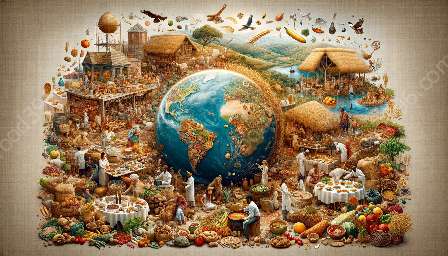Traditional irrigation practices intertwine with traditional farming methods and food systems in ways that have sustained communities for generations. From ancient techniques to modern adaptations, this cluster explores the timeless methods that have shaped sustainable agriculture for centuries.
Traditional Irrigation Practices
Traditional irrigation practices have played a vital role in sustaining agricultural systems throughout history. Dating back to ancient civilizations, these techniques have evolved over time to reflect the needs and resources of various cultures. Examples include:
- Surface Irrigation: This method involves directing water flow over the soil surface to saturate the agricultural land, often utilizing gravity to distribute the water.
- Drip Irrigation: A method that delivers water directly to the roots of plants, conserving water and ensuring efficient hydration.
- Canal Irrigation: Utilizing man-made channels to transport water to agricultural fields, a practice common in many traditional farming communities.
Traditional Farming Methods
Traditional farming methods encompass a wide range of practices, reflecting the diversity of cultures and landscapes across the globe. These methods have been shaped by centuries of trial and error, adapted to the specific climate, soil, and available resources of each region. Examples include:
- Polyculture Farming: A practice involving the simultaneous cultivation of multiple crops, enhancing biodiversity and sustainability.
- Agroforestry: Intertwining trees and crops for mutual benefit, providing shade, fruit, and improved soil fertility.
- Terrace Farming: Using stepped fields to prevent soil erosion and optimize water retention in hilly or mountainous terrain.
Traditional Food Systems
Traditional food systems are deeply embedded in cultural and ecological contexts, reflecting the interconnectedness of farming, food, and community. These systems often embrace local resources and traditional knowledge passed down through generations. Examples include:
- Seed Saving: Communities have long preserved and shared seeds to maintain crop diversity and preserve resilient varieties.
- Local Markets: Traditional food systems often rely on direct relationships between producers and consumers, fostering community connections and supporting local economies.
- Food Preservation: Techniques such as fermenting, drying, and pickling have been used for generations to extend the shelf life of food and reduce waste.
Exploring the rich history and techniques of traditional irrigation practices, farming methods, and food systems reveals the resilience and ingenuity of traditional agricultural communities. These interconnected topics highlight the sustainable practices that have sustained communities for generations and offer valuable lessons for contemporary and future agricultural practices.

